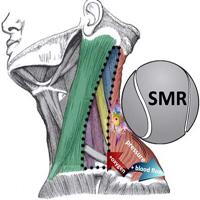A pilot study on non-invasive treatment of migraine: The self-myofascial release

Accepted: 3 February 2021
HTML: 5
All claims expressed in this article are solely those of the authors and do not necessarily represent those of their affiliated organizations, or those of the publisher, the editors and the reviewers. Any product that may be evaluated in this article or claim that may be made by its manufacturer is not guaranteed or endorsed by the publisher.
Authors
The aims of this paper was to determine the effect of self-myofascial release (SMFR) on postural stability and to analyze if it can influence migraine condition. Twenty-five subjects (age 49.7± 12.5) affected by migraine were enrolled. Assessments included a stabilometric analysis in order to evaluate balance and plantar support, with eyes open (OE) and closed (CE); cervical ROM measurement; evaluation of upper limb strength through handgrip. All the analysis were carried out before and after the administration of a single SMFR protocol, using medium density small balls laid in the three most painful trigger points in migraine patients: trapezius, sternocleidomastoids and suboccipital muscles. Performing a T test for paired samples, there was a significant increase in two ranges of the stabilometric analysis: ellipse surface, both with open and closed eyes (p value EO = 0.05; p value EC = 0.04) and length of the sway path, but just with closed eyes (p value = 0.05). SMFR might have a positive impact on postural stability in subjects with migraine. Further investigation should be conducted to confirm the hypothesis.
How to Cite
PAGEPress has chosen to apply the Creative Commons Attribution NonCommercial 4.0 International License (CC BY-NC 4.0) to all manuscripts to be published.

 https://doi.org/10.4081/ejtm.2021.9646
https://doi.org/10.4081/ejtm.2021.9646



